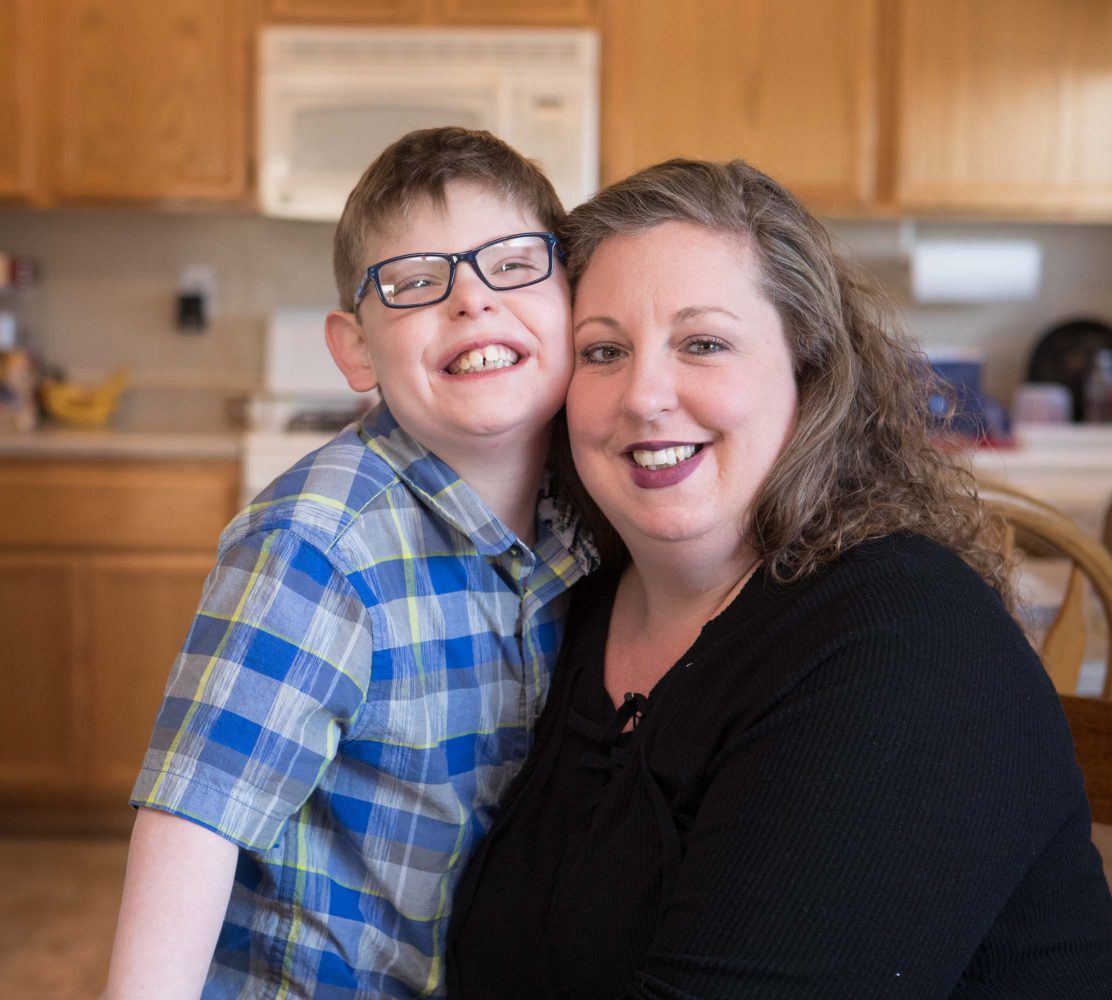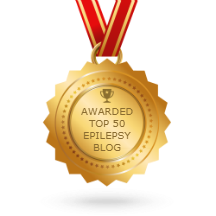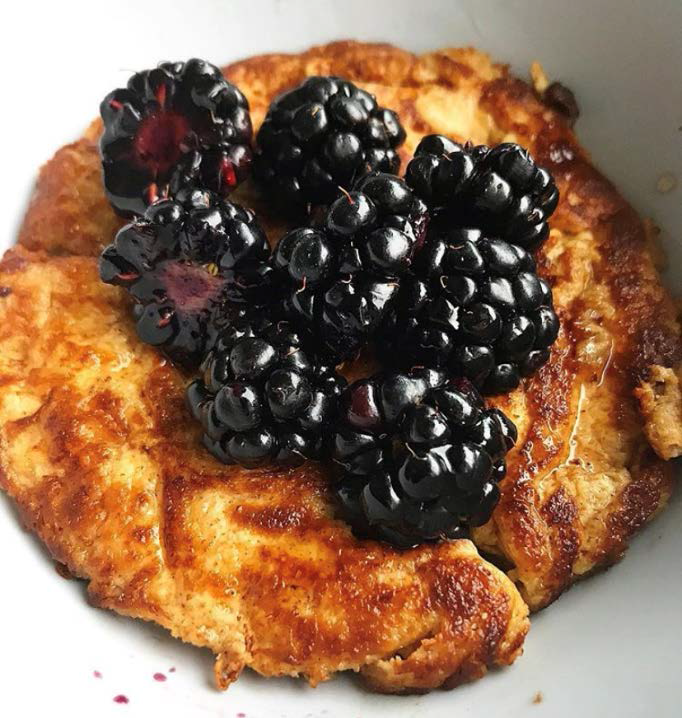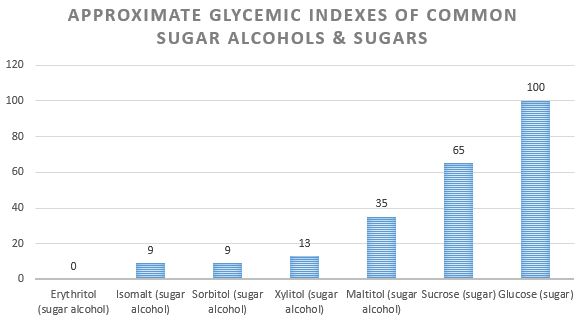 My twin 18-month-old boys, Silas & Kane, just love music and new experiences. We just celebrated our 2nd Christmas! I love watching them light up seeing all the joy around us at this time of year. It brings us so much peace.
My twin 18-month-old boys, Silas & Kane, just love music and new experiences. We just celebrated our 2nd Christmas! I love watching them light up seeing all the joy around us at this time of year. It brings us so much peace.
First Seizure Experience & a Misdiagnosis
When the boys were just 4 months old, Kane had his first seizure. I was so frightened as I was a new mom. I didn’t know what was happening. We all rushed to our local children’s hospital. While we were there, Silas started having “Aberrant Gaze Saccades”, also known as “Intermittent Involuntary Gaze (IIG)”, which looked like his eyes were crossed. He couldn’t shake out of it and would become very distressed. Lots of tests were being done on the boys and we spent days in the hospital.
One day, a few doctors came into our room and asked my husband and I, “how do you want us to tell you this information?”. My heart instantly broke and I felt a huge lump in my throat as I answered “just tell me straight up.” They told us that my twins had a rare condition called Leukodystrophy. They explained that there was no cure and that they would not live see their 5th birthday. To say I was devastated would be an understatement. I told myself that if there was any way on this earth I could get a miracle of a misdiagnosis, I would do everything in my power to make sure my boys have the best life possible.
Days later, we were so relieved to learn that the boys had in fact been misdiagnosed initially. After more agonizing days in the hospital and lots of blood tests, EEG’s, spinal taps & everything else, we got the REAL Diagnosis: Glut1 Deficiency Syndrome.
Glut1 Deficiency Syndrome & The Ketogenic Diet
Glucose Transporter Type 1 Deficiency Syndrome or Glut1 Deficiency Syndrome is a rare genetic condition that impairs the brain metabolism. Glucose cannot be properly transported into the brain, essentially starving it from the energy it needs to function and thrive. Common signs and symptoms can include seizures, movement disorders, speech and language disorders, and developmental delays. There is no cure and they will live with this condition for the rest of their lives. However, I was exploding with joy when learning that my sons had Glut1 Deficiency Syndrome! You’re all thinking I’m crazy, I know, but I could not stop crying happy tears, as in my eyes, my boys were given a second chance at life compared to the initial diagnosis we were given. I wasted no time in trying to educate myself as much as I possibly could about this condition.
My boys were put on an antiepileptic medication and we were sent home. I was noticing that my boys were not improving. They were still having multiple Aberrant Gaze Saccades a day and they were not meeting their milestones. At our next doctor’s appointment, I expressed my frustration with how the medications were not working and I mentioned that through my research, I read that the ketogenic diet was very successful in managing seizures in children with Glut1 Deficiency Syndrome. They were hesitant as a lot of parents claim that the ketogenic diet is too hard to keep up with. I told them that I need to own up to my promise that I made to myself, that I was going to do everything possible for my boys with this new chance at life. They saw how motivated I was, and they were happy to let me begin.
At first, I was very overwhelmed as I had 2 babies who required this diet. I thought “Can I ACTUALLY do this?” I was worried that maybe I was a little in over my head. We started the diet at home with the help of a dietitian who helped start the boys out on a ketogenic formula recipe. We slowly worked our way up to the 4:1 ketogenic ratio. Within the first few days, I instantly saw an increase in energy. They were starting to smile, laugh, and hold their head up on their own! I was so overjoyed with how well the diet was working! We weaned off the antiepileptic medication with success! The hard work was totally paying off.
We recently passed our 1-year milestone since they started the diet on December 21st, 2017. The boys have not had a seizure since the day they started the ketogenic diet! I know that there will be challenges as they get older and we may have hiccups along the way, but I am hopeful that the ketogenic diet will keep the seizures suppressed for the most part.
Now that the boys are toddlers exploring new foods, KetoCal® formula makes it SO easy to make really yummy recipes. My boys love cream cheese pancakes that I make with the Ketocal 4:1 LQ Vanilla (recipe below). We have a very busy lifestyle with lots of child therapy & hospital appointments. I just make a big batch of pancakes and bring them on the go! I remember a time when I felt so overwhelmed and I couldn’t think of any ideas of easy meals to make for the boys, so I sent Nutricia a message on Facebook and they sent me TONS of super easy, awesome recipes! I felt like I won the lottery! The boys also love when I use the formula to make smoothies.
The Boys’ Life Today
The boys were off to a rough start the first few months of their lives, which has caused some delays for them. At 18 months old, they still struggle with their balance. They cannot stand on their own or walk. They say “mamma” and “dada”, and they will point to things that they want. The boys are extremely motivated to start walking and they use big boxes to push around the house to help them walk. They attend water therapy, music therapy & physical therapy.
My husband and I made the decision to start a low carbohydrate lifestyle ourselves as we wanted our home to be a place where they don’t feel different or left out. We know that this is something that will be life long, so we want to make this as easy as possible for them. We want them to grow up seeing mom and dad eating the same food as them and to see that eating healthy is a good thing! As they get older, I want them to be able to open the refrigerator or cupboards without having to see food they “can’t have”. It has made me so much more passionate about the ketogenic lifestyle & I could not be more grateful for how it has impacted all of our lives!
Advice for Other Parents
My advice to any parent seeking out the ketogenic diet for their child: If medications are not working and your child is still suffering from seizures, then what do you have to lose with trying the ketogenic diet? Ask your child’s neurologist about whether the ketogenic diet might be helpful. If you do end up starting the ketogenic diet, be patient and don’t give up! It can be difficult with all the fine-tuning, but I can assure you that it’s absolutely worth it!
– Francine
I was paid by Nutricia for my time to write this blog post, however, my opinions are my own.
KetoCal is a medical food intended for individuals age 1 year and up. It is intended for use under medical supervision.
Silas & Kane’s Cream Cheese Pancake Recipe (4:1 ketogenic ratio):
- 19 g Egg (raw, mixed well)
- 15 g Cream cheese
- 15 mL Formula: KetoCal® 4:1 LQ (measure in mL) Nutricia
- 1 g Butter
- Berries (optional; needs to be calculated into recipe)
Directions:
- Mix eggs, cream cheese, KetoCal® 4:1 LQ and half of the butter into a batter.
- Pour into a greased pan on medium heat and cook until brown; flip and repeat.
- Use remaining butter as topping.
- Optional – Top with berries (be sure to calculate this into the recipe)
You can also view this recipe on MyKetoPlanner here.
Please note, this recipe is for a 4:1 ketogenic ratio. As always, please check with your healthcare provider to ensure that this recipe is appropriate for you or your child. The recipe may need to be adjusted to meet your ketogenic ratio and calorie requirements.




 Follow
Follow

 Sugar alcohols are a specific type of carbohydrate called “polyols”. Sugar alcohols are naturally occurring in fruits and vegetables and often added to foods as a reduced-calorie alternative to sugar. Some common sugar alcohols you may see in food ingredient lists include:
Sugar alcohols are a specific type of carbohydrate called “polyols”. Sugar alcohols are naturally occurring in fruits and vegetables and often added to foods as a reduced-calorie alternative to sugar. Some common sugar alcohols you may see in food ingredient lists include: